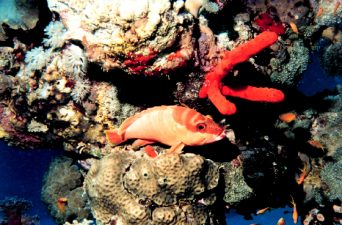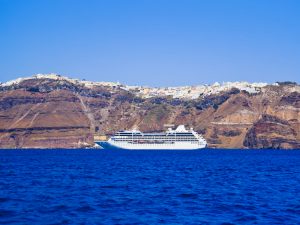 The King Abdullah University of Science and Technology (KAUST), Saudi Arabia, has featured several times in Green Prophet for developing cleaner chemical derivatives, research on rising red sea surface water temperatures and predicting flash floods , and for its Eco friendly architecture .
The King Abdullah University of Science and Technology (KAUST), Saudi Arabia, has featured several times in Green Prophet for developing cleaner chemical derivatives, research on rising red sea surface water temperatures and predicting flash floods , and for its Eco friendly architecture .
But KAUSTs scientific research potentials are also partially leveraged due to its unique location. On the coast and half way between the two extremes of the Red Sea, KAUST has access to a significant wealth of undiscovered treasures floating- no, better – marinating right in front of them. The microorganisms of the Red Sea.
Dr. Feras Lafi, a scientist in the KAUST Red Sea Laboratory of Integrative Systems Biology (left), is among those investigating the unusual microbial communities in Red Sea sponges. Here are two examples of how these little animals can become pivotal for the advancement of marine science.
The Extremophiles:
The deep-sea anoxic brines of the Red Sea are considered to be one of the most remote and extreme environments on Earth, while remaining one of the least studied. Approximately 25 such brine-filled pools are currently known in the Red sea, all of them are anoxic, highly saline deep-sea water bodies with elevated temperatures and heavy metal concentration. Given that very few studies have focused on the microbiology of these particular deep-sea brines, and none have concentrated on their biotechnological applications- KAUST is seizing this opportunity to uncover the enormous scientific and commercial potentials behind the extremophilic microorganisms of the Red Sea.
Initial studies have revealed a significant biodiversity of microbial communities, and several new groups of extremophilic microorganisms have been identified many of which have developed novel metabolic pathways, enzymes, and chemicals due to the unparalleled harsh conditions in which they live in. KAUST believes that developments in the understanding of the genetics and biophysical processes behind these microbial communities will result in a multitude of new biotech applications of great scientific and commercial value for the Middle East.
An example of current biotech applications through marine microorganisms is from salt-tolerant microbes (halophiles). Halophiles provide an extremely valuable source of new proteins and enzymes adapted to extreme conditions which are used for the production of food additives, natural food colorants (e.g. β-carotene), as well as the production of alternative, biodegradable, bioplastic (Polyhydroxyalkanoates), and bacteriorhodopsin, a molecule with wide applications ranging from artificial retina to neural networks and optical computing. Further examples include the bioremediation of contaminated soils and waters, microbially-enhanced oil recovery processes and the recovery of saline soils for agriculture. As is evident, the potential for new biotech applications and discoveries are great thanks to the Red Sea.
Tistrella mobilis, and Didemnin B – the anti-cancer drug:
Another international team of scientists at KAUST, is advancing research on the anticancer drug didemnin B, a strong antiviral, immunosuppressant compound that could potentially cure cancers such as adenocarcinoma of the kidney, advanced epithelial ovarian cancer, and metastatic breast cancer.
The compound didemnin B , was discovered in the Caribbean colonial tunicate Trididemnum solidum over 30 years ago, however the high cytotoxicity of the compound, and the complex pharmacological activity have hindered its development as a potential anti-cancer drug.
However, researchers at KAUST have now been able to isolate another species of bacteria from the Red Sea: Tistrella mobilis and found that it produces compounds that are identical in structure to didemnin B, which were originally isolated from T. solidum. A complete genome sequencing of the T. mobilis bacteria revealed a cluster of 10 genes encoding an enzyme complex that synthesizes two types of didemnin, didemnin X and didemnin Y into didemnin B. This mechanism of conversion is still not fully understood, however the results from KAUSTs research suggest that didemnin B could be produced by other bacterial species, as the gene cluster encoding the didemnin B-synthesizing enzyme is better understood.
Significantly, the discovery of the didemnin biosynthetic gene cluster may provide long-term solutions to renewable supplies of didemnin b and pave the way for the genetic engineering of new didemnin congeners.
In short, this is good news for the development of biotechnology and marine pharmacology in the Middle East.
Image via KAUST



